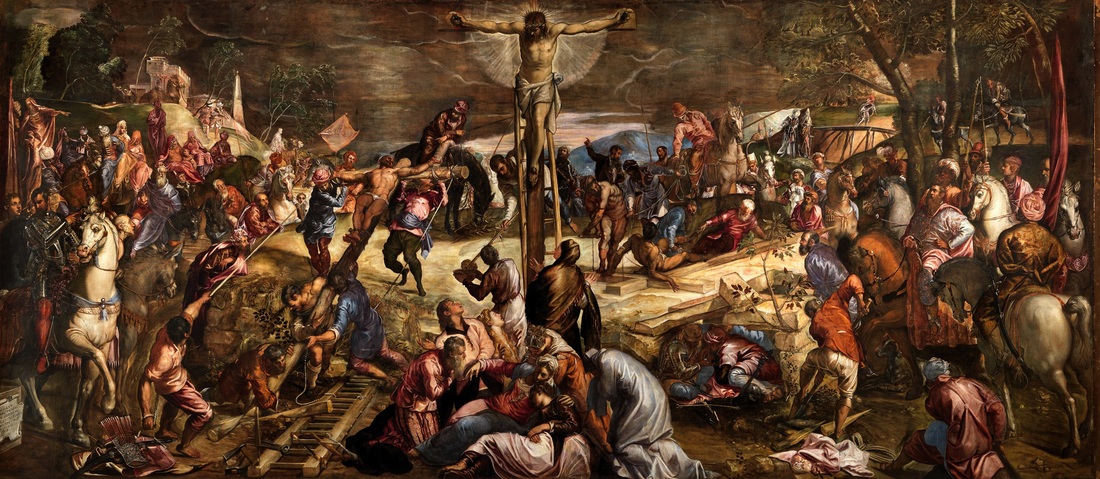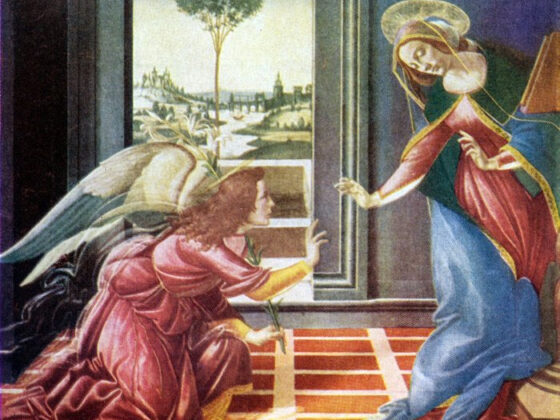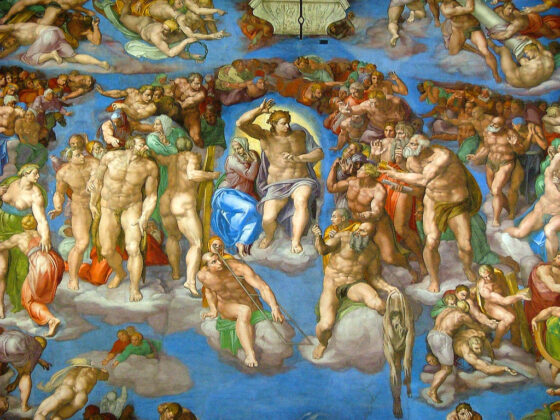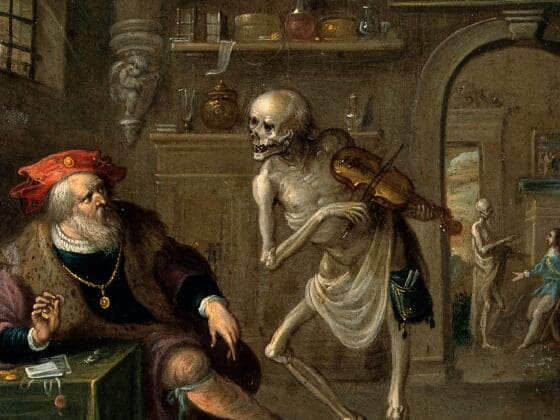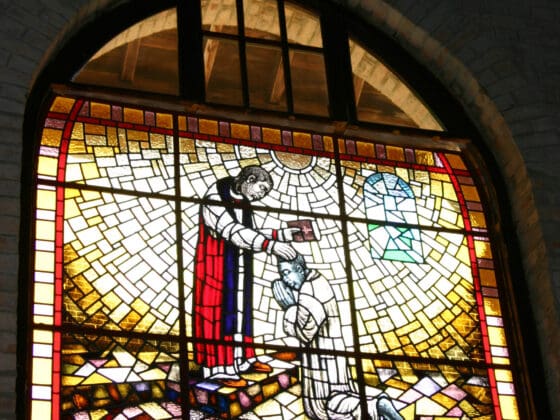Sermon Preached at Redeemer Anglican Church, Bellevue, PA, July 18, 2021
Lessons: Isaiah 52:13-53:1-6; Romans 6:1-11; Luke 24: 36-53
I grew up as an unbeliever and only became a Christian and was baptized and confirmed when I was half-way through college. So I have this little doubting Thomas voice etched in my conscience that can comprehend the question “Is it true?” “Is God for real?” By contrast, my wife Peggy was a cradle Christian, Episcopalian in fact. When she was in college, in response to a class lecture, she tried to think as if God didn’t exist; she lasted only a day or two before giving up the experiment. God just had to be there!
The revolution in my thinking was not just about God but about Jesus. In my preteen years, I attended a Unitarian Sunday school (Unitarians believe in no more than one God). I remember they had us read the earliest Gospel of Mark where Jesus cries, “My God, my God, why have you abandoned me?” and where on Easter morning, the story ends abruptly with the women running away in fear because they had come to the wrong tomb. Then they took us to the latest Gospel of John where the Risen Jesus is walking through walls, telling Thomas to stick his hand in the nail and spear holes from the Cross and then levitating out of sight. You see, they said, the early Church perverted the kindly moral teacher of Nazareth into the walking and talking God of the Creeds. (A decade later, when I went to seminary, I learned a gussied-up name for this view. It’s called “the development of Christology.”)
Back to my conversion. When I began to read the whole Bible for myself, I found a very different portrait of Jesus Christ and came to the conclusion that C.S. Lewis was right when he said Jesus either was mad or he was bad or He was God. The Creeds come down squarely on the “God” side of this matter: the Son of God is of one Being with the Father and begotten of the Father from all eternity. Equally, the Creeds say that Jesus Christ our Lord was fully human, conceived by the Holy Spirit and born of the Virgin Mary, and that He suffered and was crucified, dead and buried under Pontius Pilate, the Roman Procurator in Palestine in 30 AD. When He rose from the dead and ascended into heaven, He did so in His human (if glorified) body.
Last week I described Jesus’ incarnation not just as the moment of his virginal conception (true though it is) but as “Jesus Becoming Jesus.” With some fear and trembling (for who can know the mind of the Lord) I would now suggest that Jesus came to discover and His own identity, mission, and destiny as He lived out His life, and over the course of three years He conveyed this life to His apostles, who in turn passed them on to us in the New Testament. This apostolic Good News about Jesus is summarized in the Creeds and is the only reason on this earth that we can hope for eternal life with God (John 3:16).
Surely the most important influence on the boy Jesus was his immersion in the Scriptures of the Old Testament. By the age of twelve, He was already confounding the Jewish teachers of the Law with His mastery of the Bible. He was already a rabbi, a prodigy. But beyond His comprehensive knowledge of Scripture, Jesus brought an inspired insight that was utterly unique, and this insight is at the heart of the Gospel and of the Creeds. It is found in our reading today from the prophet Isaiah. This insight is a “news flash,” indeed a Good News flash from God.
The Book of Isaiah has sometimes been called “the fifth Gospel” because it is filled with prophecies of Christ. Last week we read from early chapters which speak of the Virgin Birth of a Son whose name Immanuel means “God with us” and whose titles are “Wonderful Counselor, Mighty God, Everlasting Father, Prince of Peace” (Isa 7:14; 9:6). This is the classic description of the Messiah, the greater Heir of David’s line: the government of the universe, not just of Israel, will rest on his shoulders. Jewish interpreters took these titles as hyperbole. The Messiah was god-like, but not God Himself.
But Jesus understood the prophecy literally: God Himself was coming in person. In chapter 40, God instructs the nation to bear witness to God’s coming: “Get you up to a high mountain, O Zion, herald of good news … say to the cities of Judah, ‘Behold your God!’” (Isa 40:9). The Good News – and I think Jesus read it this way – is that God the Divine King is coming in Person to save His people and indeed the whole world. This insight is revolutionary, and if false, it is blasphemous: the Messiah and the Great I AM are one and the same.
Jesus noted something else equally radical in this latter section of the book of Isaiah. Embedded in it are four passages describing a figure called “the Servant of the Lord.” Modern scholars call these four texts “Servant Songs” (Isa 42:1–4; 49:1–6; 50:4–7; and 52:13–53:12). When we first meet the Servant in chapter 42, he is identified with the people of Israel, recalling God’s promise to Abraham that in his seed the nations of the world would be blessed (Gen 12:3). Now the Lord repeats this promise to his Servant: “I will make you as a light for the nations, that my salvation may reach to the end of the earth” (Isa 49:6). Why do I think Jesus knew this passage? We can hear in it an echo of Jesus’ Great Commission to go into the world and preach Good News to the nations.
The prophecy is not just about the Great Commission. It’s about the great Commissioner, who speaks as God: “All authority in heaven and earth are given to me,” Jesus says. Isaiah’s vision of the messianic Son of God, born of a Virgin, was confirmed when Jesus was baptized and the Father’s voice from heaven said: “You are my Son: this day I have begotten you.” For most Jews, the title Son suggested the power and majesty of the coming Messiah, the second King David. But Jesus – and only Jesus – turned the title “Son” into “Son of Man,” the second Adam, fallen and born to die, and He alone linked Isaiah’s messianic title “Son” with that of “Servant,” i.e., God’s slave.
That’s not all. Jesus went one step further when He identified the “Servant” with vicarious suffering. We see this theme most clearly in the final Servant Song in Isaiah, chapters 52-53, which is our text today. The Song begins with a glorious vision: “Behold, my servant shall act wisely; he shall be high and lifted up” (Isa 52:13). But right alongside this vision of glory comes a vision of, well, ugliness: “he had no form or majesty that we should look at him,” Isaiah says, “no beauty that we should desire him… his appearance had been marred beyond human semblance” (Isa 53:12,14).
This paradox of the Servant’s glory and ugliness comes as an utter surprise to the earthly kings, who confess. “He was despised and rejected by men; a man of sorrows, and acquainted with grief; and as one from whom men hide their faces he was despised, and we esteemed him not” (53:3). “We didn’t get it,” the ancient potentates say. And they were not the only ones. My Unitarian Sunday School teacher didn’t get it. My “death of God” seminary professor didn’t get it. I didn’t get it, but for the grace of God.
The Song then moves to one even more marvelous feature of the Servant’s suffering and grief: it was not for his sins but for ours:
Surely he has borne our griefs and carried our sorrows; yet we esteemed him stricken, smitten by God, and afflicted. But he was wounded for our transgressions; he was crushed for our iniquities; upon him was the chastisement that brought us peace, and with his stripes we are healed. (53:4-5)
Jesus alone saw the Servant’s great work as one of vicarious suffering, of atoning for the sins of others.
Finally, the Song states that this suffering was not accidental, but the very will of God: “All we like sheep have gone astray; we have turned – every one – to his own way; and the LORD has laid on him the iniquity of us all” (verse 6).
Now, friends, let me say this – as one who bears the title “Professor of Biblical Studies”: there is no other passage like Isaiah 53 in the Old Testament. Jews in Jesus’ day and down to the present, refuse to accept its clear meaning. And they are not the only ones: Jesus’ own disciples missed the point. When James and John ask to sit at Christ’s right hand in glory, He rebukes them, saying: “the Son of Man came not to be served but to serve, and to give his life as a ransom for many” (Mark 10:45).
I believe that Jesus, and He alone, came to understand this prophecy to be referring to Himself. As Jesus and His disciples journeyed toward Jerusalem for Passover, He predicted that He would be handed over to the chief priests and crucified and on the third day rise – but they did not understand Him (Mark 9:32). Then on Easter evening, three days after His Crucifixion, Jesus appeared at Emmaus and “opened their minds to understand the Scriptures,” saying to them: “Thus it is written, that the Messiah should suffer and on the third day rise from the dead” (Luke 24:45-46). Forty days later, Jesus ascended into heaven, having told them to wait in the city until they were empowered by the Holy Spirit to preach the Gospel to the ends of the earth.
In John’s Gospel, Jesus conflates the crucifixion, resurrection, and ascension into one image of being “lifted up.” He tells Nicodemus:
No one has ascended into heaven except he who descended from heaven, the Son of Man. And as Moses lifted up the serpent in the wilderness, so must the Son of Man be lifted up, that whoever believes in him may have eternal life. (John 3:13-15)
This is a strange yet powerful picture of the vicarious atonement: Jesus, the cursed snake, is lifted up on the Cross for the healing of the people. Again, as He entered Jerusalem on Palm Sunday, Jesus announced the coming world-historical crisis, saying, “Now is the judgment of this world; now will the ruler of this world be cast out. And I, when I am lifted up from the earth, will draw all people to myself” (John 12:31-32).
Have you noticed that there are three kinds of cross in Christian churches: in Catholic churches the crucifix depicts the broken body of Jesus; in Protestant churches the empty cross reminds us the empty tomb on Easter morning; and in Eastern Orthodox churches the “Christus Victor” cross show Christ enthroned in glory and conquering the powers of darkness. In the same way, I think the Apostles’ Creed expresses in one extended sentence the single “lifting up” of the Son of God: “suffered under Pontius, Pilate, crucified dead and buried, risen from the dead and ascended to the right hand of God the Father Almighty.”
There is one final implication of the Isaiah passage, which Jesus foresaw. At the end of this song, God vindicates the Servant and extends the benefits of saving work to sinners. He announces:
Out of the anguish of his soul … the righteous one, my servant, will make many to be accounted righteous, and he shall bear their iniquities. Therefore I will divide him a portion with the many, and he shall divide the spoil with the strong, because he poured out his soul to death and was numbered with the transgressors; yet he bore the sin of many, and makes intercession for the transgressors. (verses 11-12)
This is why Isaiah is called the fifth Evangelist, because he preaches the justification of the ungodly through the atoning death of Christ. In our baptism, we are symbolically reenacting the death, resurrection and ascension of Christ. In our Epistle today, Paul says:
Do you not know that all of us who have been baptized into Christ Jesus were baptized into his death? We were buried therefore with him by baptism into death, in order that, just as Christ was raised from the dead by the glory of the Father, we too might walk in newness of life. For if we have been united with him in a death like his, we shall certainly be united with him in a resurrection like his. (Rom 6:3-5)
The difference, of course, is that we are still on this side of the valley of the shadow of death, while the Risen Lord is on the other side. But, Paul asserts, when we believe in Jesus Christ, when we walk by faith, we have the assurance of eternal life with him:
Now if we have died with Christ, we believe that we will also live with him. We know that Christ, being raised from the dead, will never die again; death no longer has dominion over him. For the death he died he died to sin, once for all, but the life he lives he lives to God. So you also must consider yourselves dead to sin and alive to God in Christ Jesus. (Rom 6:8-11)
This is the basic believing we confess as Christians. Are we putting our lives in hands of a badman or a madman? Many in the ancient world thought it immoral and crazy to worship a crucified criminal, the so-called King of the Jews. Many in our world think so too. This is the scandal of the Gospel, as Paul expresses it:
For the word of the cross is folly to those who are perishing, but to us who are being saved it is the power of God. For the foolishness of God is wiser than men, and the weakness of God is stronger than men. (1 Cor 1:18,25)
What about you? Are you still a doubting Thomas? Don’t let Thomas’ little voice prevent you from the promise: “Blessed are those who have not seen and yet have believed” (John 20:29). As those who have been baptized into Christ and who now walk in newness of life, let us join with St. Paul in saying: “Thanks be to God for His expressible gift!” (2 Cor 9:15).
